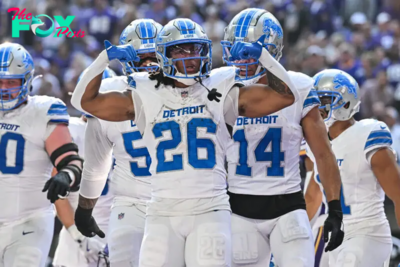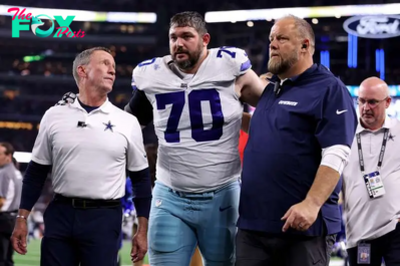NFL
How are Super Bowl cities selected?
Highest ranked team? Largest capacity? Decent weather? Presidential choice? Have you ever pondered why a particular venue is chosen for the Super Bowl each year? If so, satisfy your curiosity once and for all with our explanation.
How is a Super Bowl stadium chosen?
The San Francisco 49ers will take on the Kansas City Chiefs at the Allegiant Stadium in Las Vegas, Nevada on Sunday, February 11 at 6:30 p.m. ET, 3:30 p.m. PT.
But why was this and other locations chosen?
Weather here nor there
The truth is that the venue decision used to be very much a weather-related issue. With the season coming to its climax in February, areas with a lot of sun was always a deal-clincher. Alaska has traditionally been unlikely to get the nod, although with climate change running rampant, that could change in the future!
The warmer climes of Miami, New Orleans and Los Angeles have seen them lead the way with the number of Super Bowls held there. The Greater Miami area for example hosted for their 12th time in 2021, while New Orleans has taken charge on ten previous occasions and the Greater LA region seven times.
Bidding for the Bowl
Weather, however, is not the only deciding factor. Instead, the bidding cities must compete to get the responsibility and honor of hosting the largest event on earth, and this process has changed over the years. In the past, the NFL would invite cities to make a bid. From those that did, the options would be whittled down by the league to a few ‘finalists’ who would then be asked to submit their presentation. These documents - which can be up to 600 pages and take around a year to compile - would then be reviewed and decided upon by the 32 team owners.
In recent years, though, this model has changed. Since 2018, the large-scale comPetition was done away with and the NFL now contacts their chosen venue and ask them to put together a suitable proposal. The owners then vote to accept or deny.
Some of the conditions to be fulfilled by the host city/venue
I hate to be the bearer of bad news but the almost yearly rumors that the Super Bowl may be headed for one of the great stadiums around the world, be that Wembley in London, Mexico City’s Azteca, or Madrid’s Santiago Bernabéu are never going to happen. The first stipulation in the NFL’s bidding process rules it out entirely. Here are the key conditions for a bidding city.
• The host stadium must be in a market that hosts an NFL team and must have a minimum of 70,000 seats, with the media and electrical amenities necessary to produce the Super Bowl. Stadiums may include temporary seating for Super Bowls, but seating must be approved by the league. Stadiums where the average Game day temperature is below 50 °F (10 °C) must either have a roof or a waiver given by the league. There must be a minimum of 35,000 parking spaces within one mile of the stadium.
• The host stadium must have space for the Gameday Experience, a large pregame entertainment area, within walking distance of the stadium.
• The host city must have space for the NFL Experience, the interactive football theme park which is operated the week prior to the Super Bowl. An indoor venue for the event must have a minimum of 850,000 square feet (79,000 m2), and an outdoor venue must have a minimum of 1,000,000 square feet (93,000 m2). Additionally, there must be space nearby for the Media Center, and space for all other events involved in the Super Bowl week, including golf courses and bowling alleys.
• The necessary infrastructure must be in place around the stadium and other Super Bowl facilities, including parking, security, electrical needs, media needs, communication needs, and transportation needs.
• There must be a minimum number of hotel spaces within one hour’s drive of the stadium equaling 35% of the stadium’s capacity, along with hotels for the teams, officials, media, and other dignitaries. (For Super Bowl XXXIX, the city of Jacksonville docked several luxury cruise liners at their port to act as temporary hotel space).
• There must be practice space of equal and comparable quality for both teams within a twenty minute drive of the team hotels, and rehearsal space for all events within a reasonable distance to the stadium. The practice facilities must have one grass field and at least one field of the same surface as the host stadium.
• The stadium must have a minimum of 70,000 fixed seats, including club and fixed suite seating, during regular season operations. (Source: “NFL’s lengthy list of requirements for Super Bowl host city leaked”. Sports Illustrated)
Where will the future Super Bowls to be held?
After this season’s finale at the Allegiant Stadium in Las Vegas we’ll be off to the Caesars Superdome for Super Bowl LIX in New Orleans.
In 2026, the Super Bowl will be held at Levis Stadium in Santa Clara, California while 2027 sees a return to SoFi Stadium in Inglewood, California.
-

 NFL13m ago
NFL13m agoTNF Week 12 NFL Picks, Predictions, Odds & Best Bets | Pickswise
-

 NFL28m ago
NFL28m agoDraftkings Best NFL Showdown Picks: Lions vs. Colts 11/24/24
-

 NFL32m ago
NFL32m agoKansas City Chiefs vs. Carolina Panthers odds, tips and betting trends | Week 12 - November 24, 2024
-

 NFL32m ago
NFL32m agoWashington Commanders vs. Dallas Cowboys odds, tips and betting trends | Week 12 - November 24, 2024
-

 NFL2h ago
NFL2h agoNFL Fans React To Kay Adams’ Hot Tub Photos
-

 NFL5h ago
NFL5h agoSteelers vs Browns prop betting picks: Best player prop bet for TNF | Pickswise
-

 NFL5h ago
NFL5h agoNFL Parlay Picks for This Week at +990 | Pickswise
-

 NFL5h ago
NFL5h agoNFL prop bets Week 12 2024: Texans vs. Titans




















